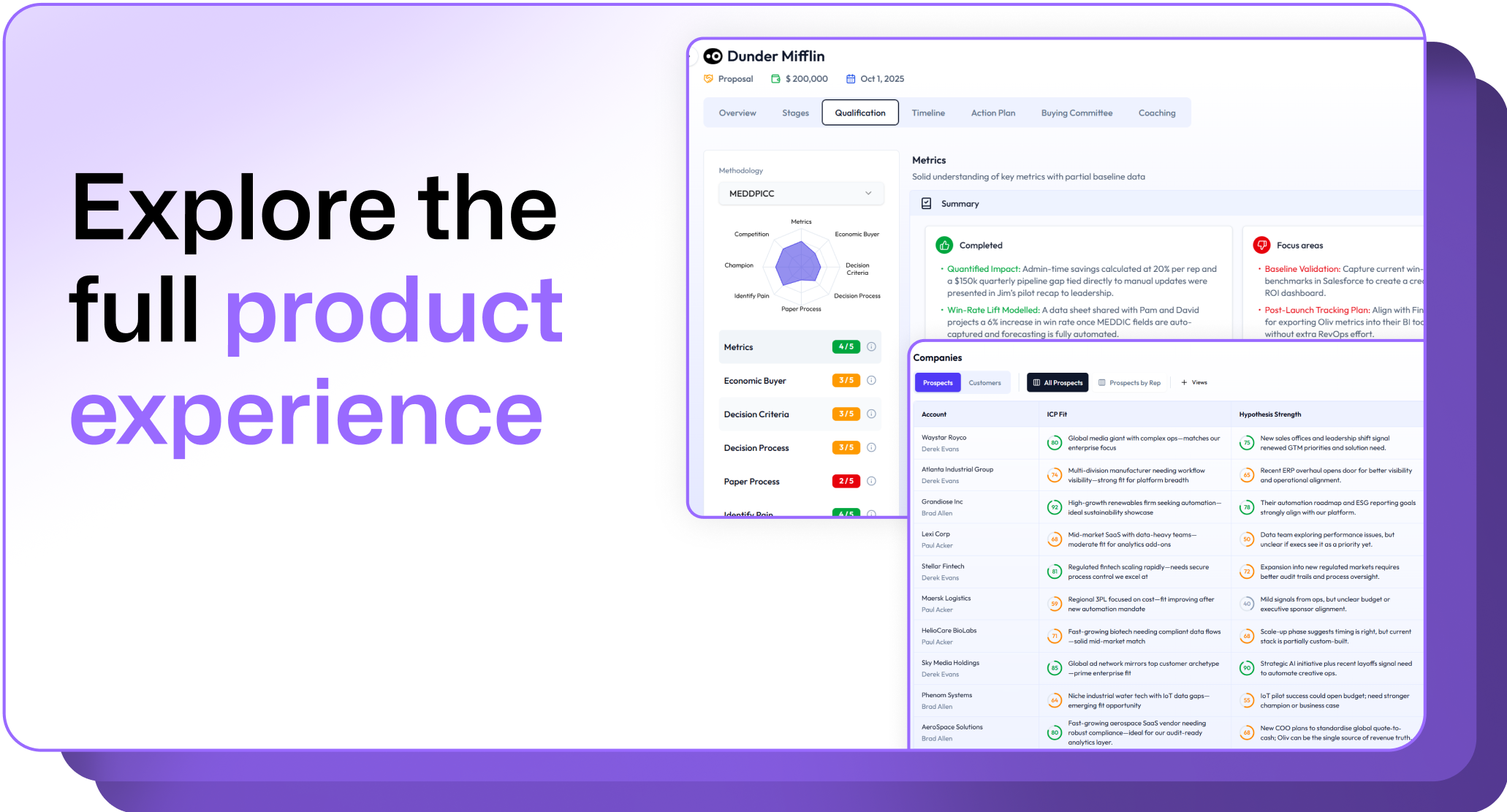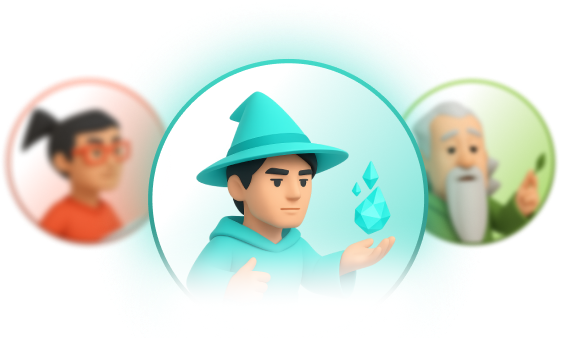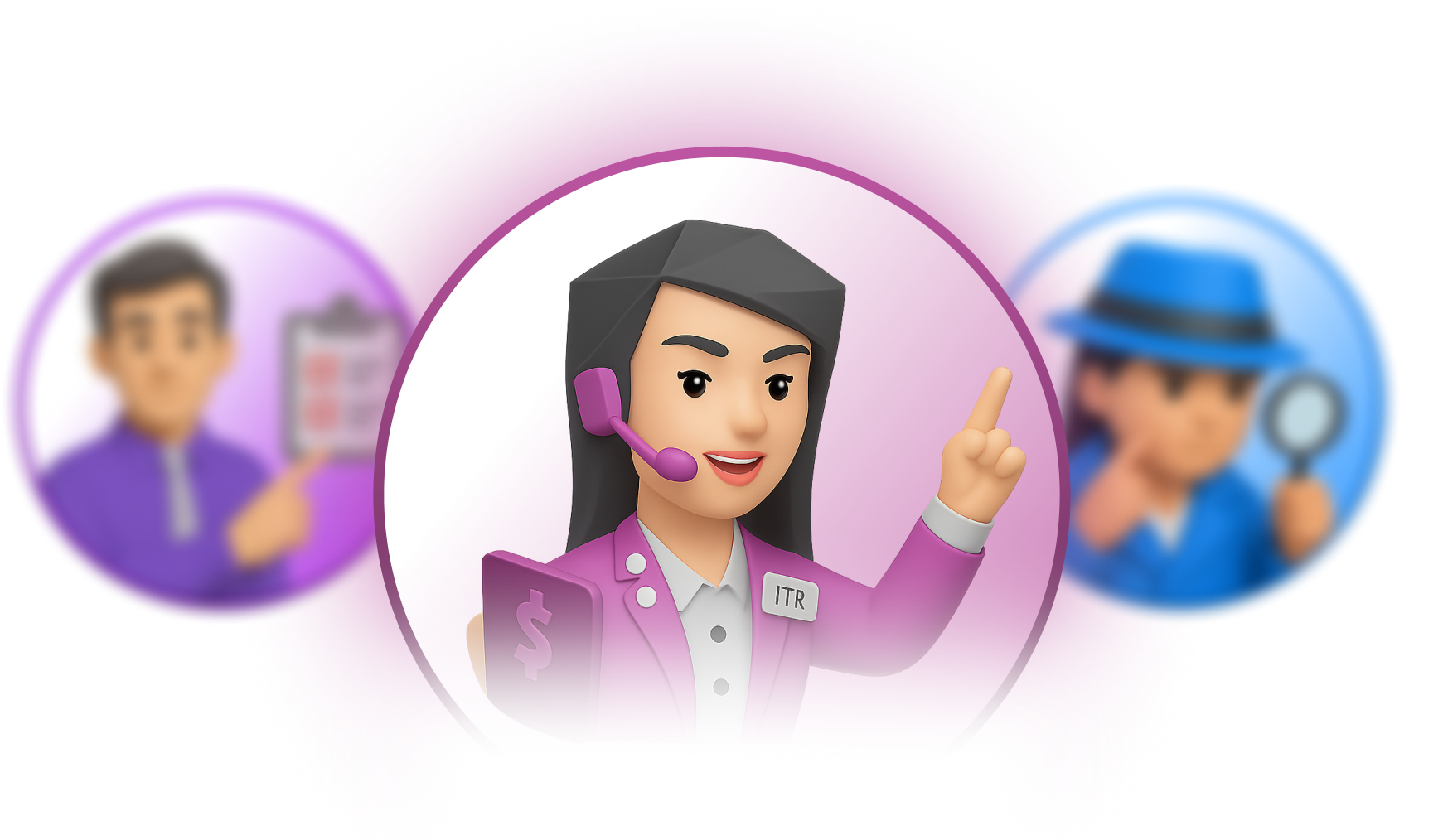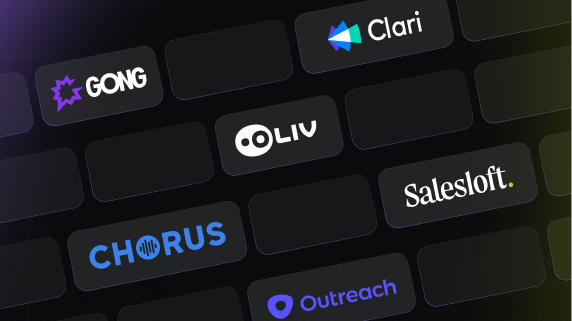The best use of a sales rep’s time is in making prospect calls, closing deals, and exceeding sales targets. But do you know where they spend a lot of their time instead? Attending meetings!
Let us face it- some meetings can feel like the opposite of progress. And it is not just a feeling; 55% of sales reps say meetings steal valuable selling time. But they do not have to be a time suck. With the right approach, meetings can drive collaboration and results as they were meant to.
Let’s talk about the most common sales meeting challenges and specific strategies for overcoming those meeting issues.
What are some universal meeting challenges?
You know those days when it feels like your whole day is disappearing into long meetings? While often necessary, poorly run meetings can destroy productivity and leave your team frustrated and demotivated.
Let us dive into the most common meeting challenges and how to turn things around. Your time is valuable, so let us make every minute count.
1. Lack of clear meeting agenda
Problem:
We have all been there- those meetings that drag on, wander off-topic and leave everyone questioning their purpose. Without an agenda, conversations become aimless, important updates are missed, and everyone leaves feeling frustrated.
Solution:
- Productive meetings need a pre-circulated agenda outlining objectives to keep everyone focused.
- Before scheduling, consider if a well-crafted email could replace the meeting. Encourage critical thinking on necessity.
- Balance daily meeting quotas with sales productivity metrics for immediate tasks and long-term growth.
2. Too many meeting attendees
Problem:
Ever been stuck in a “full-house” meeting where half the attendees are barely paying attention? These overcrowded calls slow down decision-making, side conversations derail discussions, and it is easy for important information to get lost in the noise.
Solution:
- Carefully consider who needs to be involved to achieve the meeting’s objectives. Avoid inviting people just because they are generally related to the topic.
- Opt for a smaller, focused attendee list and share a recording or summary with the rest of the team. There are multiple meeting summary templates available online.
- Lead by example. If your team sees you curating meeting invite lists carefully, they will likely do the same.
3. Dominant voices and rambling
Problem:
We all know those team members who love to hear themselves talk and hijack the conversation. But when a few people dominate the conversation, it leaves less space for others to contribute, and the meeting diverts off-track.
Solution:
- A designated facilitator can keep meetings on track, ensure everyone speaks, and steer discussions back to the agenda.
- Assign time limits to agenda items to create urgency and prevent getting stuck on single issues.
- Capture off-topic but valuable ideas in a designated space, leveraging Oliv’s automated highlighting feature for easy access later. No more frantic note-taking- those valuable insights are automatically preserved and easily accessible for after-sales follow-up.
- For repeat ramblers, consider a private conversation to address their meeting behavior directly.
4. Lack of follow-up
Problem:
We have often left workplace meetings feeling energized, only for that momentum to evaporate when action items gradually begin to fade from our memory. Did you know that 63% of meetings tend to have zero follow-up? Without them, even the best discussions amount to nothing, eroding team morale.
Solution:
- Meeting notes are crucial for decisions, tasks, and deadlines. Oliv's summaries capture every detail for follow-ups or closing.
- Track tasks in Asana or Trello? Oliv integrates with both. Need reminders? Oliv sends them directly to Slack.
- Regularly check in on action items to show commitment and identify bottlenecks before they hinder progress.
Are there any virtual-only meeting challenges?
Love or hate virtual meetings, they are probably here to stay. But let us be honest, they come with their own set of awkwardness and frustration. Let us tackle those virtual meeting challenges and make them more productive (and maybe even a little less painful).

1. Technical troubles
Problem:
There is nothing quite like the sinking feeling you get when someone’s audio cuts out, their camera freezes mid-sentence, or worse, an unexpected barking dog interrupts an important discussion. Tech hiccups disrupt the meeting flow and can even derail progress entirely.
Solution:
- Encourage pre-meeting tech checks, especially for high-stakes calls. Test audio and video to prevent issues. Suggest a wired connection for stability if WiFi is unreliable.
- Set ground rules like muting mics when not speaking, choosing distraction-free backgrounds, and having a backup plan for tech issues. Maintain patience and humor to keep morale up.
2. Combatting Zoom fatigue
Problem:
Virtual meetings can be exhausting, even without any physical work involved. Zoom fatigue is not just a buzzword- it is a real drain on productivity and morale and, therefore, demands the same attention as other more commonly discussed meeting challenges.
Solution:
- Respect attention spans and reduce mental overload. For longer meetings, include short breaks every hour to rest eyes and return refreshed and focused on the meeting and sales goals.
- Allow turning off cameras occasionally to reduce mental strain. These practices make meetings more productive and worthwhile.
3. Engagement and participation
Problem:
It is hard to gauge how your team is doing in a virtual meeting. That blank screen might be someone paying close attention, or it might be someone checking their email. This lack of feedback makes it much harder to keep everyone engaged.
Solution:
- Use polling tools to check understanding and encourage participation. For larger meetings, use breakout rooms for focused discussions.
- Directly ask for input respectfully to re-engage participants. Follow up privately with those who tend to disengage to address specific issues.
4. Building rapport virtually
Problem:
Remember when you could swing by a colleague’s desk for a quick pep talk? Or grab lunch with your work best friend to vent about a difficult client? Remote work has made those little moments much harder. Without them, it is easy for teams to feel disconnected, even if they are getting the work done.
Solutions:
- Start meetings with informal chatter or icebreakers to set a relaxed tone and help people connect.
- Schedule non-work-focused virtual events like games or trivia to build relationships. Show genuine interest in team members' hobbies or weekends to foster connections.
- Tools like Gather.town can facilitate casual chats and "watercooler" moments, even remotely.

Client-specific meeting challenges and how to solve them
Client meetings are essential but can come with unique challenges that require specific strategies to address. Here are some common client-specific meeting challenges and how to overcome them:
1. Dealing with unresponsive clients
Problem:
Clients who are slow to respond or do not engage promptly can delay project timelines and decision-making processes.
Solution:
- Encourage pre-meeting tech checks, especially for high-stakes calls. Test audio and video to prevent issues. Suggest a wired connection for stability if WiFi is unreliable.
- Set ground rules like muting mics when not speaking, choosing distraction-free backgrounds, and having a backup plan for tech issues. Maintain patience and humor to keep morale up.
2. Difficult personalities
Problem:
Some clients may be challenging to work with due to their demanding nature, unrealistic expectations, or confrontational attitude.
Solution:
- Use active listening to understand their concerns and respond calmly and professionally.
- Establish clear boundaries and communicate any constraints or limitations.
- When conflicts arise, address them directly and seek to find a mutually acceptable solution. Maintaining a professional demeanor can help de-escalate tensions.
3. Information overload
Problem:
Clients can become overwhelmed with too much information, leading to confusion and indecision.
Solution:
- Break down complex information into manageable pieces and present it in a clear, concise manner.
- Use visual aids like charts and diagrams to illustrate key points.
- Summarize the main takeaways at the end of the meeting and provide a written recap to ensure clarity.
4. Lack of client preparation
Problem:
Clients may come to meetings unprepared, lacking necessary information or having not reviewed prior materials, which can hinder progress.
Solution:
- Send out pre-meeting materials well in advance and highlight key areas that require their attention.
- Follow up with a brief reminder and a checklist of what they need to prepare.
- During the meeting, guide the discussion to ensure all necessary points are covered.
By addressing these client-specific meeting challenges with targeted solutions, sales teams can improve their interactions, foster better relationships, and drive successful outcomes.
5 tips for great meetings
Let us be honest- most of us dread at least some of the meetings that we have to attend. However, it does not have to be that way unless some ineffective meeting practices are followed. A few simple shifts can make meetings feel productive or even, dare we say it, enjoyable.
Here are five tips to overcome common meeting challenges:
1. Keep it action-focused
Before scheduling any meeting, ask yourself: What is the decision we need to make or the specific problem we need to solve? Having a clear outcome prevents those rambling “catch-ups” that accomplish nothing. It shows you respect your team’s time.
Create a targeted agenda. Outline the key points for discussion, the specific decisions needed, and who is responsible for bringing what information to the table. This ensures everyone arrives prepared to contribute. Oliv’s effective meeting prep can make a list of points to discuss or follow up on during the meeting.
2. Trust the power of visuals
We have all zoned out during a meeting, whether in-person or online. A few simple slides, even bullet points, do wonders to keep everyone engaged and take care of many of the meeting challenges. It turns a rambling monologue into a clear path forward, especially during those long-drawn virtual meetings.
3. Ask for feedback for improvement
We all want meetings to be productive, but it is hard to know if they’re hitting the mark without honest input. That is why anonymous surveys are so valuable. It is your team’s chance to say, “We love the quick check-ins, but those Tuesday brainstorming sessions need a fresh approach.” Asking for feedback shows your commitment to making those meetings work for everyone, not just the person running them.
4. Opt for standing meetings
Picture this: It is 3 pm, your sales reps are heads-down on a project, and ding- it is a meeting invite that will eat up the rest of their afternoon. Instead, try quick daily huddles- 15 minutes where everyone gives a status update.
Often, you can knock out meeting challenges and issues right then and there, saving hours of back-and-forth emails or those huge, unfocused meetings later.
5. Celebrate meeting successes
When goes well, shout it out. Maybe your team nailed a tough problem, or the new meeting format is saving everyone’s sanity. Saying “Great job today, everyone.” reinforces those positive behaviors and boosts morale.
Remember, changing meeting challenges into productive habits takes time. Start with a few of these tips, see how they work, and gradually add more. You will be amazed at how these small shifts in meeting habits can make a huge difference for your team.
Tools that can help overcome common meeting challenges
1. Oliv AI
Tuesday morning, another endless string of meetings... and you already know some will be a waste of time.
Enter Oliv, your AI-powered meeting assistant.

a) The master planner
No more rambling meetings with no purpose; Oliv helps you craft clear agendas by analyzing past discussions and your team’s goals so you only tackle what truly matters.
It even identifies who truly needs to be involved, ensuring only the right people are pulled away from their work. Need a confidence boost before a big meeting? Oliv subtly suggests talking points to keep those conversations flowing smoothly.
b) The time keeper
This is for those meetings that veer wildly off-track. Oliv gently nudges discussions back to the agenda with subtle reminders, keeping everyone focused on the task. Stuck on a tough decision? Oliv helps you break those stalemates by surfacing relevant data on the fly- saving you from digging through past emails or spreadsheets.
And say goodbye to that post-meeting “what did we decide?” haze- Oliv captures clear, actionable next steps
c) The taskmaster
Oliv does not just stop at the end of the meeting. It seamlessly integrates with your favorite project management tools, automatically turning those action items into real progress, not just a list forgotten at the bottom of someone’s notebook.
Plus, with Oliv’s automatic recording and transcription, you will never miss a key detail. Need to revisit a conversation? A simple search is all it takes.
2. Calendly
Calendly is an automated scheduling tool designed to simplify the process of booking meetings. It allows users to set their availability preferences, which others can then view and select from, making it easy to find mutually convenient times without the back-and-forth emails.
How It Can Help:
- Simplifies scheduling by letting participants choose from available time slots, reducing the hassle of coordinating times.
- Integrates with various calendar systems like Google Calendar, Outlook, and iCloud to avoid double bookings and ensure all appointments are synchronized.
- Automatically sends reminders to participants, which reduces the likelihood of no-shows and keeps everyone on the same page.
3. Zoom
Zoom is a robust video conferencing tool known for its high-quality audio and video, as well as its extensive features like screen sharing, breakout rooms, and interactive polling. It supports large meetings and webinars, making it a versatile choice for different types of virtual interactions.
How It Can Help:
- Ensures high-quality audio and video, which helps maintain engagement and clear communication during virtual meetings.
- Breakout rooms allow for small group discussions within larger meetings, facilitating focused conversations and teamwork.
- Interactive features like polling and Q&A sessions engage participants, keeping them involved and making the meeting more dynamic and interactive.
4. Trello
Trello is a project management tool that uses boards, lists, and cards to help organize tasks and projects. It provides a visual overview of what needs to be done, who is doing it, and what the progress is, making it easier to manage workloads and deadlines.
How It Can Help:
- Tracks tasks and deadlines assigned during meetings, ensuring that all action items are accounted for and progress is visible.
- Allows team members to see who is responsible for each task, enhancing accountability and clarity.
- Facilitates collaboration with features like comments, attachments, and checklists, enabling teams to work together effectively and stay organized.
5. Slack
Slack is a communication tool designed for teams, offering instant messaging, video calls, and file sharing. It organizes conversations into channels and threads, making it easy to manage and follow discussions on various topics.
How It Can Help:
- Enhances communication before, during, and after meetings by providing a platform for instant messaging and quick updates.
- Organizes discussions by topic with channels and threads, ensuring that conversations stay relevant and are easy to follow.
- Integrates with other tools like Google Calendar, Trello, and Zoom, creating a seamless workflow and reducing the need to switch between multiple applications.
By leveraging these tools, you can address and overcome common meeting challenges, improve productivity, and ensure that your meetings are more effective and enjoyable for all participants.
Ready to level up your meetings? Conclusion
Meetings might feel like a necessary evil, but they do not have to be a productivity black hole. You can turn those dreaded calendar blocks into sessions that energize your team by singling out meeting challenges specific to your team and adopting a few simple strategies.
To quickly recap:
- Set clear agendas and outcomes beforehand.
- Be ruthless about the invite list.
- Encourage feedback to continuously improve.
- Celebrate those meeting wins.
Request a free Oliv demo to tackle those meeting challenges one after the other… and who knows, maybe even start looking forward to your next meeting.












.png)
.png)
.png)


